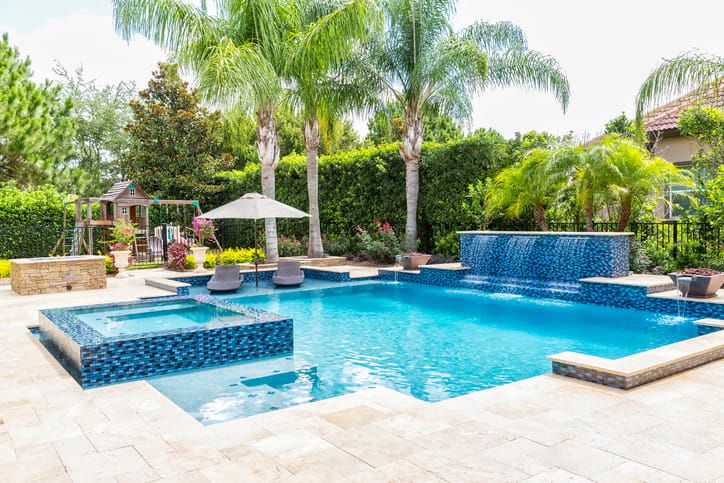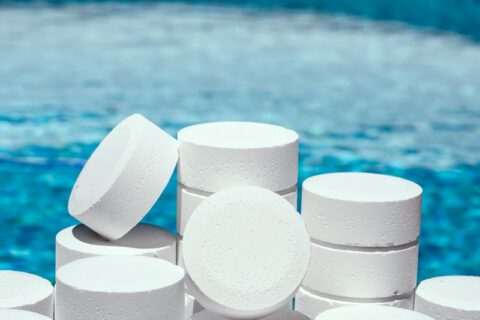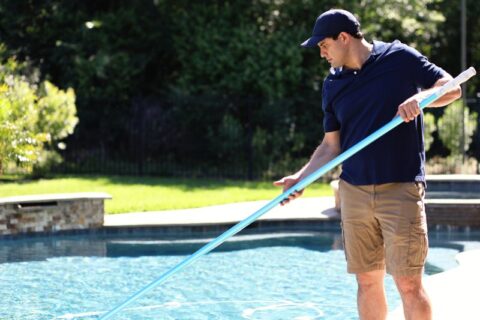Types of Pools That Need the Least Maintenance

All pools require maintenance. The water, pumps, filters and other components all need attention on occasion. But did you know that the pool surface you choose affects maintenance requirements and long-term costs? Compare concrete, vinyl and fiberglass pools to see which one needs the least maintenance.
Concrete Pool Maintenance
Pools lined with concrete and then covered in plaster have a porous surface, which attracts algae. Weekly scrubbing with a steel brush is required to prevent blooms. Tile-lined concrete pools don’t have an algae problem, but tile is expensive to install and will start falling off if you wait too long to resurface the pool.
Concrete is also alkaline, which affects the water pH. As a result, it’s harder to maintain the proper pool chemistry. You may need to add acid daily to keep the levels in balance.
Long-term maintenance requirements are also high. Concrete pools must be acid washed every three to five years to kill algae and remove stains. Then, the entire pool must be resurfaced every 10 to 15 years, which costs thousands of dollars.
Vinyl Pool Maintenance
Pools with a PVC or vinyl lining deter algae, but blooms can still grow along the seams. To prevent this, plan to perform occasional algae inspections in addition to your regular pool maintenance.
One weakness of vinyl pools is that they can puncture and leak, which can corrode the shell if it’s made of metal. Routine leak inspections are necessary to ensure this doesn’t go undetected. Fortunately, vinyl pools are very durable, and punctures aren’t likely. It’s also possible to fix leaks without replacing the entire liner.
Long-term maintenance includes vinyl liner replacement every five to 10 years or as needed, which costs about half as much as resurfacing a concrete pool.
Fiberglass Pool Maintenance
Fiberglass pools have a completely smooth, non-porous surface, so algae growth isn’t a problem. This makes pool cleaning a breeze, as long as you keep up with regular maintenance.
Because fiberglass is so durable, repairs are rarely needed. However, if damage does occur, the cost to fix it may be quite high.
The long-term cost of owning a fiberglass pool is low because there’s no need to acid wash, resurface or replace a liner.
The Bottom Line
Concrete pools require the most maintenance. Vinyl pools come in second, and fiberglass needs the least maintenance of all. Keep in mind that the overall design and depth of fiberglass pools are limited, and renovating your pool is more difficult if it’s made of fiberglass. However, lower day-to-day and long-term maintenance may be worth the compromise.
If you require pool maintenance in Maryland, Virginia or Washington DC, turn to Millennium Pool Service. In addition to weekly and biweekly maintenance, we also offer leak inspection, vinyl liner replacement, and other residential pool services. We draw on over 35 years of experience to ensure a job well done.
Contact Millennium Pool Service today to request a service estimate. We have convenient locations in Frederick, MD and Springfield, VA.


